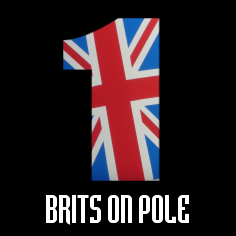There’s a wonderful story now running on the official Formula One site about how a couple of surgeons teamed up with McLaren and Ferrari to plug a gap in their procedures that was putting sick children at risk.
Great Ormond Street Hospital already does fundraising work with F1 – last year the annual celebrity-filled party in the run-up to the British Grand Prix raised £350,000. But no-one expected a technical partnership to be possible too.
That is, not until two doctors watching a Grand Prix for relaxation after carrying out an operation suddenly saw a possible answer to a nagging problem that the hospital already knew it needed to fix.
A careful study had shown that much of its good work treating sick babies and children in the operating theatre and in intensive care afterwards was being undone during the period between theatre and ward.
The short journey and handover between the two periods of careful treatment was fraught with risk – but no-one knew quite what steps to take to solve the problem.
Until Dr Allan Goldman, head of the hospital’s paediatric cardiac intensive care unit, and cardiothoracic surgery chief Professor Martin Elliott found themselves watching an F1 pit stop on TV.
“Two of us are F1 fans and we were sitting one Sunday, after a transplant, watching a Grand Prix,” said Dr Goldman. “Professor Elliot remarked that when you look at a Formula One pit stop, how they all get together is really the epitome of how a team can reconfigure into a functional unit.”
The pair were struck by how both pitstop and surgical handover involved multiple specialists simultaneously using complex equipment to carry out numerous precise tasks that all had to be completed quickly and accurately.
They resolved to contact some of the teams and see what they could learn.
Dr Goldman said: “Initially we went to the McLaren team and then later on we also worked with Ferrari. We spoke about leadership and how to organise the process, who was in charge, rhythm, task allocation, checklists, all of which aren’t well embedded into medicine. They were all very simple things, but they were just not part of our culture.”
The doctors visited the British Grand Prix and the Ferrari base at Maranello, while senior engineers from both teams visited the hospital. This led to a flood of suggestions from the teams covering everything from equipment to protocols, many of which the hospital was able to adopt.
The result has been a significant decrease in problems during the dangerous period between surgery and intensive care. Handovers are now quicker and errors have fallen by a third – with a particular reduction in situations where one problem triggers another and the situation rapidly spirals beyond control.
“The key thing we found was that there was a reduction in multiple errors,” said Dr Goldman. “You notice when you see clips of Formula One that when things go wrong, like a fuel hose gets stuck, the little errors add up and cascade into a major failure. It was the same with us and we were very pleased that it caused a reduction of multiple errors.”
And, as a bonus, hospitals from around the world are queueing up to learn how it was done.
* The full story is on the Formula One website here. This week also sees the official F1 / Great Ormond Street Hospital Children’s Charity party, which includes a fundraising auction – more details here.
